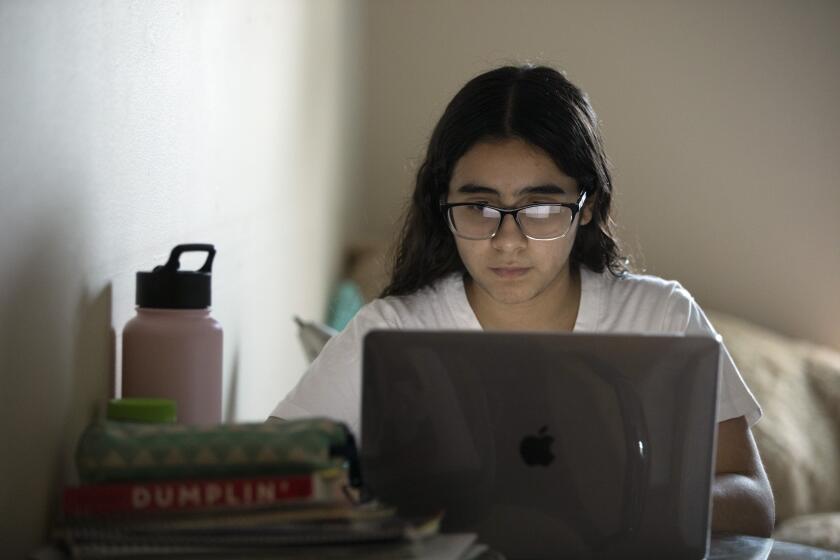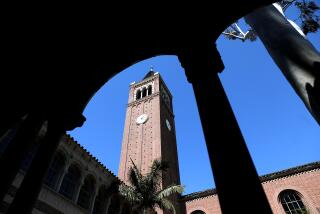Op-Ed: Ivy League schools are the Kardashians of higher ed. Don’t fixate on their admission rates

Annual coverage of the college admissions process is in full swing. Headlines call attention to booming applications and plummeting admit rates, especially among Ivy League universities and their peers. One headline in particular stayed with me: “A Great Admissions Year, for Some.”
I keep asking myself the same question over and over: Great for whom?
Certainly, it is not great for the 96.6% of applicants who were rejected by Harvard, or the 96.3% rejected by Columbia, or the 96% rejected by MIT, Princeton and Yale. It is also not great for the 92% rejected by Williams, Swarthmore and Colby.
It is not great for the cause of college access in the United States, though, to be fair, these elite institutions have never been central to solving the problem of access. They serve a relatively tiny group of high-achieving students — those who would succeed pretty much anywhere — and not the populations that suffer most from the disparities that define present-day society.
Is it great, perhaps, for the push for more racial and economic diversity at these institutions? It does appear as if most of these schools admitted classes that were slightly, though not dramatically, more diverse than they were in many previous years — an effort aided by the pandemic-induced switch to test-optional admissions. But let’s be honest: It did not require even larger applicant pools for elite colleges to admit more diverse classes. Yale could have drawn as diverse a class as it wanted from its applicant pool of five or 10 years ago.
University of California admissions officers explain their decisions in a year of record applications that brought widespread heartbreak and some joy for high school seniors competing for spots.
Is it even great, I wonder, for those hyperselective colleges and universities? Do Harvard or Columbia benefit in any tangible way from admitting an even more minuscule percentage of the mostly qualified students in their applicant pools? Are their classes more engaging, their researchers more productive, their campus activities more fulfilling? Even U.S. News, the arbiter of all things qualitative, has stopped using the percentage of students admitted as a factor in their rankings, so colleges can’t even point to a rankings boost.
The fact that these institutions continue to aggressively market themselves seems to border on cruelty. Stanford has a lovely 52-page viewbook that includes color photos of happy students at a university virtually no one can attend. How much did it cost to produce, I wonder, and who receives it — and why?
It will take some time to fully understand this tidal wave of applications to the most selective colleges during the time of COVID-19. I suspect that some combination of pent-up demand, test-optional policies, cost-free “virtual” visits and more applications per student is responsible. Not being able to walk around a campus or do an overnight stay makes it more difficult to decide which colleges you like, but also more difficult to decide which colleges you don’t like, so perhaps application decisions were less fine-tuned than usual.
If there is nothing particularly great about students applying to colleges where their chance of admission is roughly equivalent to the chance of a woman giving birth to twins, is there anything especially bad about it? After all, most of these students will be admitted to some other perfectly good college, even if it isn’t their first or even fourth choice.
But this flood of applications does not seem to have trickled down to most of the less selective colleges and might be making their decisions more difficult. Most of them didn’t receive record numbers of applicants and are admitting a higher percentage of students to make sure enough enroll — and they will be subject to waitlist decisions of schools further up on the prestige scale, according to Robert Massa, an enrollment consultant. “It is not a pretty picture,” he says.
Generally, strangeness in an admissions year tends to create the most uncertainty among the least selective colleges, and by many measures this is the strangest of strange years.
More broadly, these numbers and the headlines they generate reinforce the misperception among the public and among legislators of the actual state of higher education in the United States. Read most any major newspaper and it is easy to come away with the impression that the largest problem in higher education is the overabundance of applicants and that the schools are awash in tuition revenue. Every moment spent focusing on the acceptance rate in the Ivy League is a moment not spent focusing on how to make any form of college a realistic possibility for all students in the country for whom that would be the best path.
The answer is not to make the size of classes at hyper-elite institutions larger, as many are arguing. Nor is it to add additional campuses. I can think of few worse ways to spend a billion or so dollars than to build another Stanford campus so that the admit rate can go from 4% to 8%. There is nothing especially wrong with the Ivy League universities getting a bit larger, but this will do nothing to solve any problem of real magnitude. It will mean that more students will attend Brown instead of Bates.
The answer, perhaps unachievable, is for everyone, and especially the media, to stop obsessing over a small, atypical segment of higher education and focus instead on subjects like community colleges, which educate 5.5 million students a year, or the connection between college attainment and family income.
The universities in the Ivy League and their similarly fortunate peers are superb institutions, but they are, to the general public, the Kardashians of higher education — unattainable, wish-fulfilling, endlessly fascinating. For most U.S. students, they are a fantastical version of college that bears little relation to their lived experience. These schools make headlines, but in the end, whether they turn away 95% or 96% of their applicants makes very little difference.
Brian Rosenberg is president in residence of the Harvard Graduate School of Education and president emeritus of Macalester College.
More to Read
A cure for the common opinion
Get thought-provoking perspectives with our weekly newsletter.
You may occasionally receive promotional content from the Los Angeles Times.











